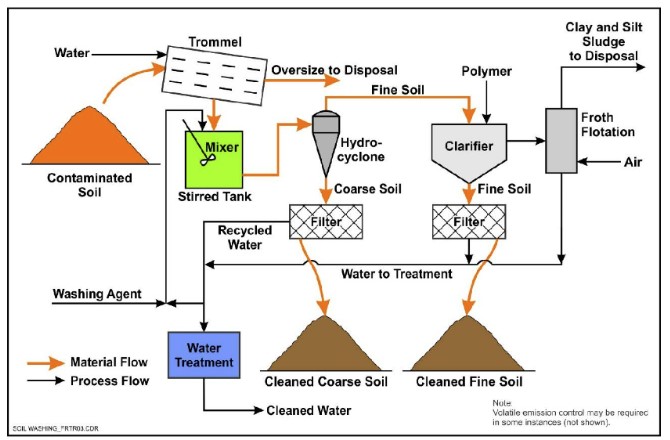M270 PFAS Treatment for Sustainable Waste Management
M270 PFAS Treatment for Sustainable Waste Management
Blog Article
Ingenious PFAS Treatment Solutions for Safer Water
The boosting frequency of PFAS contamination in water supplies necessitates an essential examination of ingenious treatment options. Additionally, emerging bioremediation techniques offer a more lasting strategy to tackling PFAS challenges. pfas management.
Introduction of PFAS Contamination
PFAS contamination has actually emerged as a considerable ecological and public wellness issue. Per- and polyfluoroalkyl compounds (PFAS) are a team of synthetic chemicals understood for their perseverance in the environment and human body, leading them to be frequently described as "for life chemicals." These substances have been commonly made use of in various sectors, consisting of firefighting foams, water-repellent fabrics, and food packaging, mostly as a result of their water- and grease-resistant homes.
The extensive usage of PFAS has actually resulted in their detection in dirt, water materials, and also in the blood of people and animals. Research studies have linked PFAS direct exposure to countless health concerns, including developing effects in infants, immune system dysfunction, and different forms of cancer cells. In addition, the environmental persistence of these substances complicates their degradation and removal, elevating concerns about long-term eco-friendly effects.
Regulative bodies are significantly applying rigorous standards to keep an eye on and reduce PFAS levels in alcohol consumption water and various other environmental tools. As understanding of PFAS contamination grows, it has actually ended up being critical for neighborhoods and industries to seek effective therapy services to mitigate exposure and safeguard public wellness.
Advanced Filtration Technologies
As the necessity to deal with PFAS contamination intensifies, advanced purification technologies have actually become a crucial element in the removal efforts focused on getting rid of these consistent chemicals from water resources. These innovations utilize sophisticated devices to efficiently target and capture PFAS substances, which are notoriously immune to traditional treatment techniques.
Among the most appealing approaches is using granular turned on carbon (GAC), which adsorbs PFAS molecules because of its high area and porous structure. This approach has actually been widely carried out in both metropolitan and industrial settings, demonstrating considerable reductions in PFAS concentrations. Furthermore, ion exchange materials have actually gotten grip, specifically created to uniquely bind PFAS ions from water, therefore promoting their elimination.
Membrane layer purification innovations, such as reverse osmosis and nanofiltration, likewise reveal efficiency in PFAS elimination by physically separating pollutants from water - pfas management. These systems can attain high degrees of pureness, making them ideal for drinking water applications
Chemical Treatment Developments
Many chemical therapy technologies are being explored to efficiently attend to PFAS contamination in water materials. One encouraging technique entails using innovative oxidation procedures (AOPs), which make use of effective oxidants such as ozone, hydrogen peroxide, or chlorine dioxide integrated with UV light to damage down PFAS substances right into much less unsafe materials. This approach has shown efficiency in research laboratory settings, revealing prospective for scalability in real-world applications.
Another ingenious method is the development of ion-exchange resins particularly developed to target PFAS. These resins can uniquely adsorb PFAS substances from water, enabling their removal throughout therapy processes. Current advancements have actually enhanced the effectiveness and capacity of these materials, making them a positive choice for water treatment centers.
Furthermore, researchers are exploring making use of chemical agents like persulfate and ferrous ions to boost the destruction of PFAS in polluted water. These representatives can cause chain reaction next that facilitate the failure of consistent PFAS substances.
Arising Bioremediation Techniques
Current developments in chemical therapy advancements have paved the way for discovering bioremediation techniques as a viable choice for dealing with PFAS contamination. Bioremediation harnesses the all-natural metabolic processes of bacteria to degrade or change pollutants, making it an appealing technique for taking on consistent contaminants like PFAS.
Emerging strategies in bioremediation consist of using genetically crafted bacteria that can particularly target and damage down PFAS compounds. These microbial pressures are being developed for their boosted degradation abilities, increasing the effectiveness of the removal process. Furthermore, scientists are investigating the capacity of plant-assisted bioremediation, where particular plant species may uptake and withdraw PFAS from polluted dirt and water.
One more encouraging approach is the application of bioaugmentation, which includes introducing valuable microorganisms into polluted settings to boost the destruction of PFAS. This method can assist in much faster removal timelines and improve total effectiveness.

Governing Frameworks and Criteria
A detailed governing framework is important for successfully taking care of PFAS contamination and ensuring public health defense. The raising acknowledgment of per- and polyfluoroalkyl materials (PFAS) as environmental pollutants has prompted various federal and state agencies to develop requirements that regulate their presence in water supplies. The U.S. Epa (EPA) has actually developed wellness advisories and is functioning towards establishing enforceable limits for PFAS in drinking water.
State-level guidelines differ dramatically, with some states adopting stricter guidelines than those suggested by the EPA. These regulations commonly consist of maximum contaminant levels (MCLs) for specific PFAS compounds, tracking demands, and reporting commitments for water energies. In addition, arising structures concentrate on the removal of polluted websites, highlighting the demand for efficient therapy modern technologies.

Conclusion
To conclude, the growth and application of ingenious PFAS treatment solutions are essential for resolving the prevalent problem of water contamination. Advanced filtration technologies, chemical therapies, and arising bioremediation methods collectively offer redirected here a diverse technique to successfully decrease and degrade PFAS levels. As regulatory structures proceed to progress, integrating these technologies will be necessary to protect public health and restore the integrity of contaminated water resources, eventually adding to a cleaner and much safer atmosphere.
Report this page